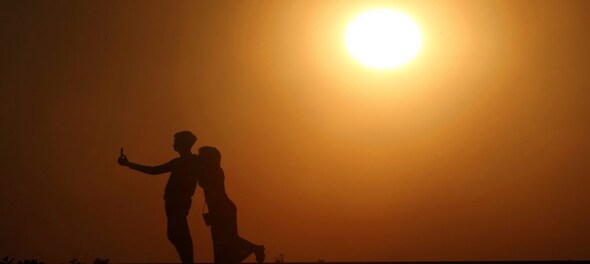
The Indian Space Research Organisation (ISRO) is aiming to launch the Aditya-L1 mission by June or July this year. The Aditya-L1 is the first Indian space mission to observe the Sun and the solar corona. Scientists at the Indian Institute of Astrophysics (IIA), Bengaluru have spent over 15 years building and assembling nearly 40 different optical elements in a payload.
On January 26, the team of scientists at IIA handed over one of the most challenging scientific payloads to the Indian Space Research Organisation (ISRO).
The critical payload, which is almost the size of a mini satellite, is being transported to the UR Rao Satellite Centre in Bengaluru on Friday, January 27. There it will be integrated into the complete satellite and if all goes well, the ISRO may launch the mission this June-July, The Hindu reported.
The mission, originally known as Aditya-1, was intended to be put into an 800 km low-Earth orbit (LEO) as a 400-kg class satellite but it was later decided that the satellite will be placed in a halo orbit around the Sun-Earth system's first Lagrangian Point (L1). This was done as the Sun may be seen constantly from this position without any occultation or eclipses. Hence, the new mission was named Aditya- L1.
What are the elements of Aditya-L1?
The Aditya-L1 satellite will have 40 different optical elements and an internally-occulted coronagraph that will reduce the scattering of Sun’s powerful light to a bare minimum. Also, a super-polished mirror built by ISRO will help the satellite image the solar corona down to as close as 1.05 Ro, starting from 1.05 times the solar radius. This will be the closest that any coronagraph has reached to image the solar corona ever.
The 90-kg visible line emission coronagraph (VERC) is one of the most important payloads, which will now be integrated into Aditya L1 satellite, which will be launched aboard the agency’s old warhorse PSLV rocket.
The Aditya-L1 satellite will carry six additional payloads, including a magnetometer, the solar ultraviolet imaging telescope (SUIT), the plasma analyser package for Aditya (PAPA), the Aditya Solar Wind Particle Experiment (ASPEX), the high energy l1 orbiting X-ray spectrometer (HEL1OS), the solar low energy X-ray spectrometer (SoLEXS), and the solar low energy X-ray. These payloads will conduct comprehensive remote and on-site observations of the Sun to expand the science scope and objectives of the mission.
“It is indeed one of the most arduous and challenging scientific instruments that our scientists have ever built,” said Professor Annapurni Subramaniam, senior astronomer at Bengaluru-based IIA, in an exclusive interview to News18.
The PSLV rocket would launch into space from Sriharikota and travel nearly 1.5 million km towards the Sun. It will take nearly 100 days to reach the L-1 point, the first Lagrangian point of the Sun-Earth system.
Mission Aditya L-1 is being regarded as a major milestone in India’s space history. It comes after NASA’s Parker Probe made headlines for becoming the first-ever mission to ‘touch’ the Sun, last year. The US probe went in and out of Sun’s corona and became the first instrument to enter its atmosphere.



